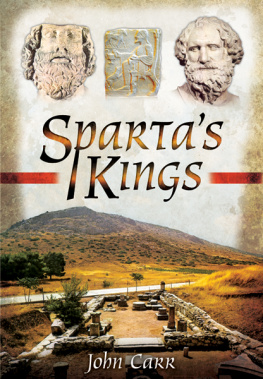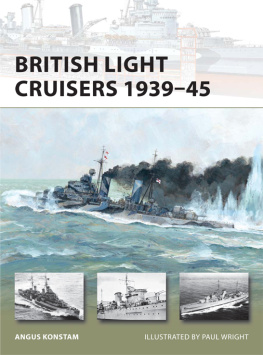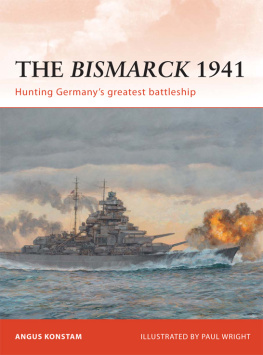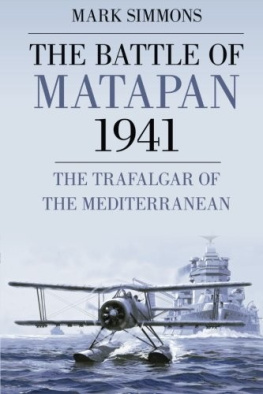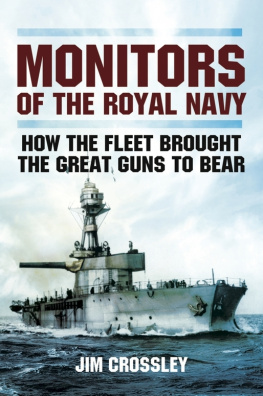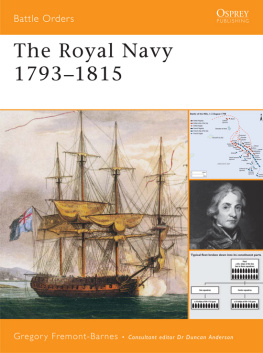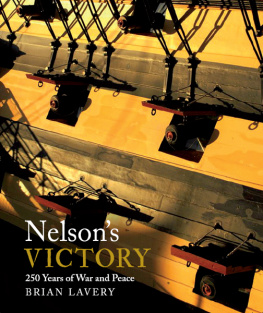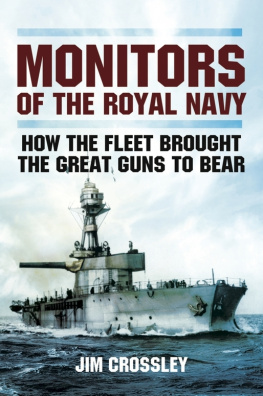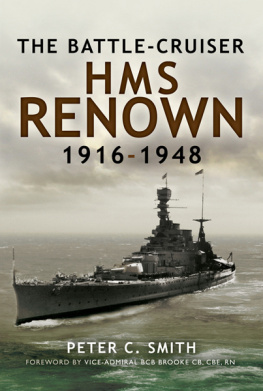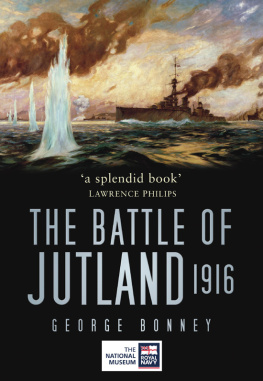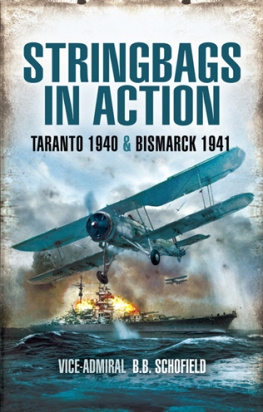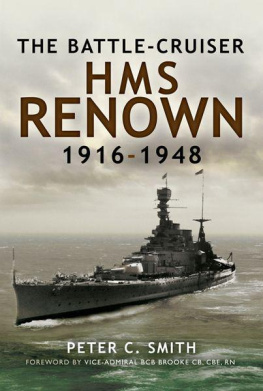First published in Great Britain in 2014 by
Pen & Sword Maritime
an imprint of
Pen & Sword Books Ltd
47 Church Street
Barnsley South Yorkshire
S70 2AS
Copyright John C. Carr 2014
ISBN 978 1 78303 021 7
eISBN 9781473838215
The right of John C. Carr to be identified as the Author of this Work has been asserted by him in accordance with the Copyright, Designs and Patents Act 1988.
A CIP catalogue record for this book is available from the British Library
All rights reserved. No part of this book may be reproduced or transmitted in any form or by any means, electronic or mechanical including photocopying, recording or by any information storage and retrieval system, without permission from the Publisher in writing.
Typeset in Ehrhardt by
Mac Style Ltd, Bridlington, East Yorkshire
Printed and bound in the UK by CPI Group (UK) Ltd,
Croydon, CRO 4YY
Pen & Sword Books Ltd incorporates the imprints of Pen & Sword Archaeology, Atlas, Aviation, Battleground, Discovery, Family History, History, Maritime, Military, Naval, Politics, Railways, Select, Transport, True Crime, and Fiction, Frontline Books, Leo Cooper, Praetorian Press, Seaforth Publishing and Wharncliffe.
For a complete list of Pen & Sword titles please contact
PEN & SWORD BOOKS LIMITED
47 Church Street, Barnsley, South Yorkshire, S70 2AS, England
E-mail: enquiries@pen-and-sword.co.uk
Website: www.pen-and-sword.co.uk
Prologue
If you consider how many times the Averof escaped disaster, you have to agree that the ship was blessed by God.
Leading Seaman (later Sub Lieutenant) George Gousis
I n a compartment on the port side of RHNS Averof theres an old tin bucket standing upside down on a table. The bucket is one of the many exhibits in the venerable armoured cruiser 102 years old at this writing which is enjoying an honourable retirement as a floating museum. A guide points to what looks like a calcium deposit stain on the side of the bucket just below the handle. Look closer, and the stain resolves itself into a tiny face a couple of inches wide rudimentary eyes and mouth and short beard, surrounded by what looks very like a halo.
The stain has been there for almost as long as the ship itself. It was first noticed by a crewmember on 20 November 1912, when the Averof was steaming towards a decisive encounter with the Turkish fleet off Cape Helles at the entrance to the Dardanelles. One officer saw in it the image of Saint Nicholas, the Greeks patron saint of the sea and seafarers, and forecast correctly, as it turned out that the ship would emerge victorious from the coming encounter with minimum casualties.
From that day on, the powder bucket was taken into the ships tiny chapel as a sacred relic. A good many people today are quite prepared to believe that some sort of supernatural guidance helped preserve the Averof through decades of war and neglect. Whatever one believes, its an undoubted fact that the way the Averof has emerged largely unscathed from a century of ordeals which would have sunk any ordinary vessel many times over, and to survive into the twenty-first century as a venerated veteran of Greeces wars at sea, is something of a miracle in itself.
My first acquaintance with RHNS Averof came during my first Greek island holiday at the age of thirteen. Standing at the rail of an island-hopping passenger boat, drinking in that wonderful Greek sunshine, I caught sight of its long grey hull moored at the resort island of Poros and remember that it seemed oddly out of place among the put-putting caiques and small white ships filling the Poros channel. It was obviously a relic of another age.
It was a time when Greece was getting on with the peaceful business of building up tourism, and so it is no surprise that the Averof was bypassed by galloping modernity. Only later, when I began a career in journalism, did I get the urge to find out more about that silent hulking presence outside the Naval Petty Officers School at Poros. It was as late as 1984, when the ship was towed from Poros to become a floating museum in Phaleron Bay, within easy distance of the city of Athens, that the public at large were made aware of what the RHNS Averof (or Georgios Averof, to give it its official but rarely used full name) had contributed to modern Greek statehood. For in 1913 it had literally been the ship that won a war.
In December 2012 the centenary, in fact, of the Averof s greatest sea battle, almost to the day my editor at Pen and Sword, Philip Sidnell, gave me the green light for this book while we were sipping coffee in Saint Pancras station in London. I had just completed the draft of my previous work, The Defence and Fall of Greece 19401941, and found myself with a large amount of unused research material in Greek, especially in the naval sector, which could really use a dedicated English-language readership. This, combined with the fact that the Averof is the worlds oldest surviving pre-dreadnought armoured cruiser still afloat and an active maritime museum wallowing in the warm Saronic Gulf alongside bevies of luxury yachts, argued strongly for a serious history of the vessel in English.
Writing this book was an education for me, as I had always considered myself an aviation specialist in military history. I am by no means a happy sailor, and couldnt tell a swabbed deck from a forestay. Im glad that this book gave me the opportunity to expand my military knowledge into matters maritime, though Im tempted to repeat the caveat of Lemuel Gullivers fictional publisher that my own ignorance in sea-affairs shall have led me to commit some mistakes. If the naval reader does note such mistakes, I beg a landlubber forgiveness.
As the Averof (correct pronunciation: Av-AIR-off) was most active during the Balkan Wars of 191213, I have found it necessary, of course, to fill in some details and history of Greeces adversary, the Ottoman Empire, which was in its dying days. The Ottoman Turkish navy had fallen a long way since its glory days of the sixteenth century when it all but ruled the Mediterranean. Yet in the years before the First World War it could field powerful pre-dreadnought warships against which the Averof would prove its mettle in the Aegean Sea.
To remove possible sources of confusion for the reader, I must include a note on Turkish usage. Regarding references to military officers with names such as Enver Bey and Shevket Pasha, the terms Bey and Pasha were not surnames but titles, roughly corresponding to Sir and General. The Turks did not employ surnames on the Western model until 1935, well after the Kemalist revolution. However, where my sources list Ottoman-era equivalents to surnames, I use them. In spelling I have resisted the pedantic temptation to retain obscure Turkish orthographical features such as the undotted i () or thick sh () as they might confuse and perhaps annoy the non-linguist (thus the more familiar Pasha instead of Pa a ), but have kept the umlauted (as in Abdlhamid) as having no phonetic equivalent in English.
I have decided not to burden a book of this modest length with numbered references in the text, apart from the occasional footnote. I list my sources in a bibliographical note at the end, with a few comments about each. As regards those who helped me get the material for this book together, first and foremost I must thank fellow-author Alex Martin for setting me upon the naval trail in the first place. Dimitris Pitellos, a shipping executive and naval enthusiast, has been of inestimable value in unearthing priceless source material on his own initiative. A great debt, as always, is owed to George Mermingas for his seemingly inexhaustible library on all aspects of Greek military history, and Vice Admiral (ret.) Ioannis Paloumbis, the curator of the Hellenic Maritime Museum, for his eager and friendly cooperation in securing historic photographs. The museum librarian, Katia Kraniotou, was especially helpful in tracking down old technical documents. Yannis Korodimos, the public relations director of the Hellenic War Museum, was always on hand with his support, while Able Seaman Markos Christodoulidis, a guide and crewmember of the Averof, has conducted me several times through its quarters and engine room, offering fascinating glimpses into history and legend.


